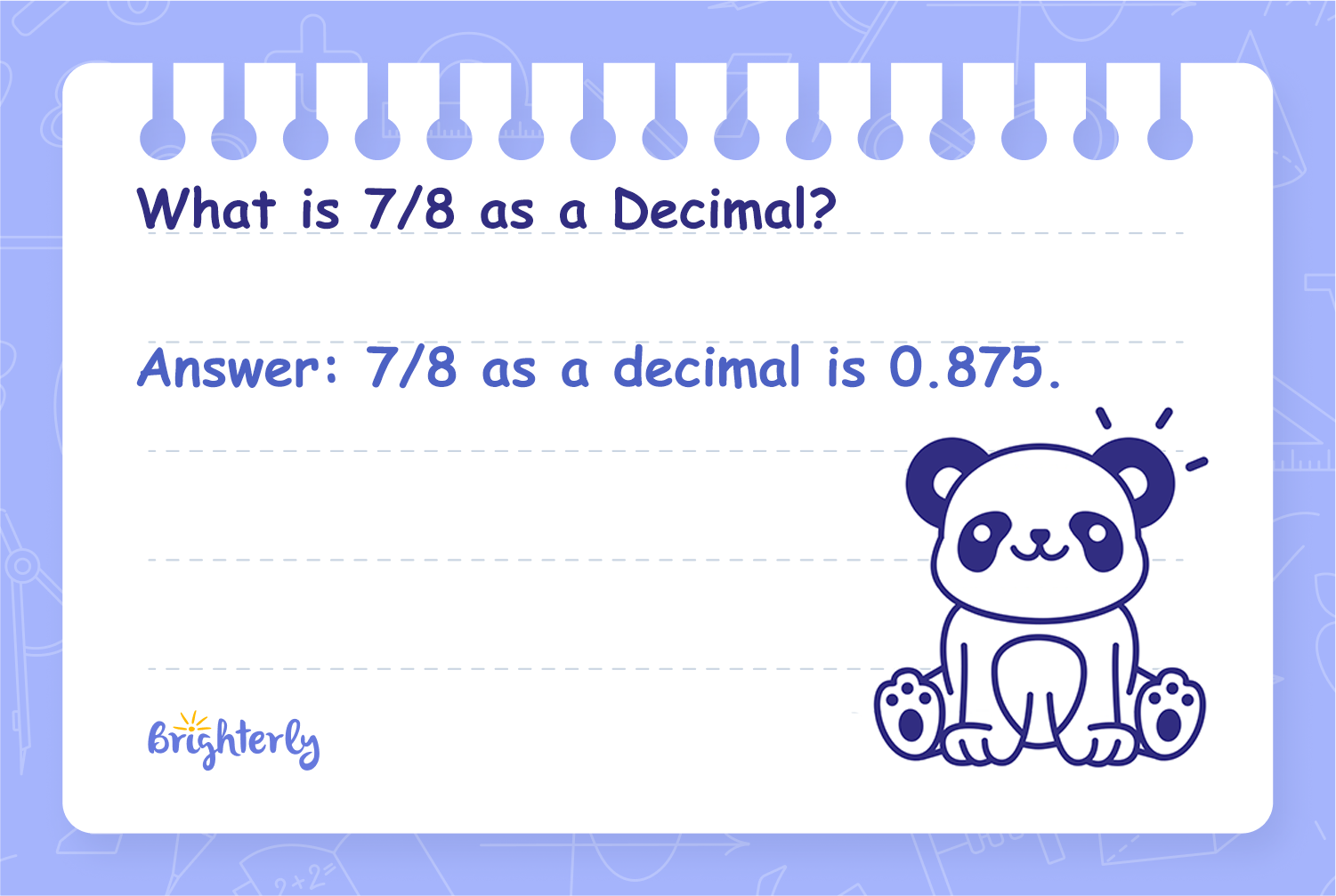
Reviewed by Camille Ira B. Mendoza
What is 7/8 as a Decimal?
Answer: 7/8 as a decimal is 0.875
Converting fractions to decimals is a fundamental math skill that helps us express parts of a whole in a different format. When faced with a fraction such as 7/8, we can use division or equivalent fractions to find its decimal representation. This process makes it easier to compare, calculate, and apply the value in various mathematical and real-world contexts.
Methods
Math Tutor Explanation Using the Long Division Method
This method involves dividing the numerator (top number) by the denominator (bottom number) to find the decimal equivalent.
Step 1: Step 1: Divide 7 by 8
Step 2: Step 2: Since 7 is less than 8, add a decimal point and zeros after the 7 to continue the division
Math Tutor Explanation Using Equivalent Fractions with Denominator 1000
You can convert the fraction so its denominator is a power of 10, making it straightforward to read its decimal form.
Step 1: Step 1: Multiply both numerator and denominator by 125 to get 875/1000
Step 2: Step 2: Write 875 divided by 1000 as a decimal, which is 0.875
Step 1:
Step 2:
Math Tutor suggests: More Fraction to Decimal Practice
Continue mastering fraction to decimal conversion with these similar exercises.
FAQ on Converting Fractions to Decimals
Why do we convert fractions to decimals?
Converting fractions to decimals helps with calculations, comparisons, and real-world applications where decimals are more commonly used.
Can all fractions be expressed as terminating decimals?
No, only fractions whose denominators (in simplest form) have factors of 2 and/or 5 can be written as terminating decimals. Others are repeating decimals.
What is 7/8 as a percent?
7/8 as a percent is 87.5%.
Can I use a calculator to convert 7/8 to a decimal?
Yes, dividing 7 by 8 on a calculator gives you 0.875.
Which is larger: 7/8 or 0.81?
7/8 is larger, since 0.875 > 0.81.


